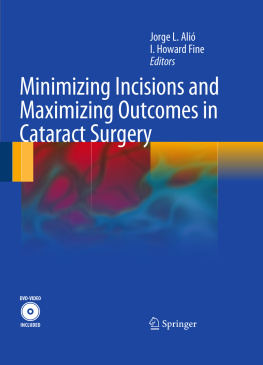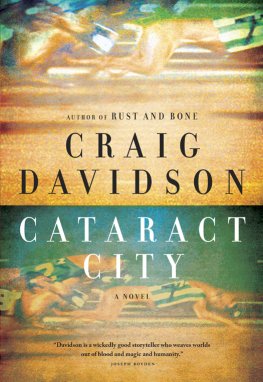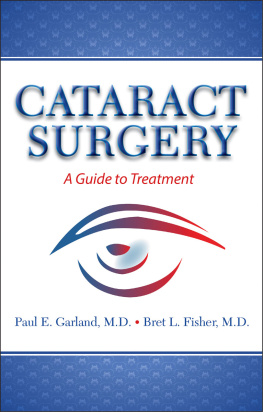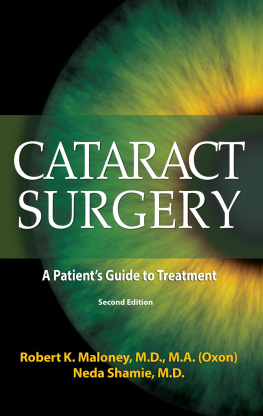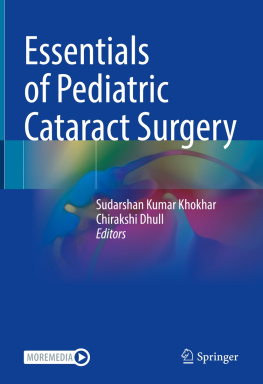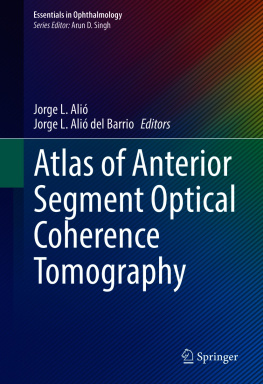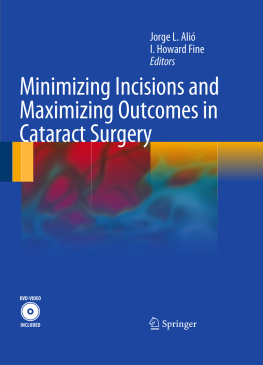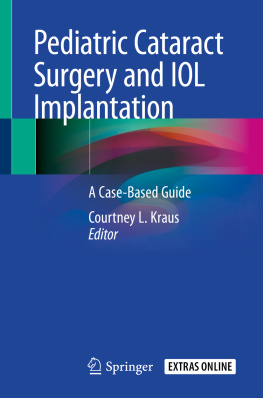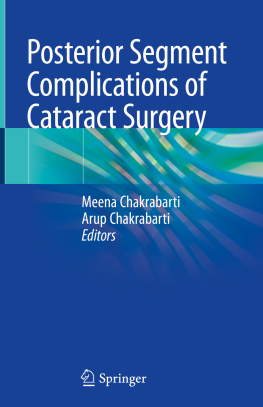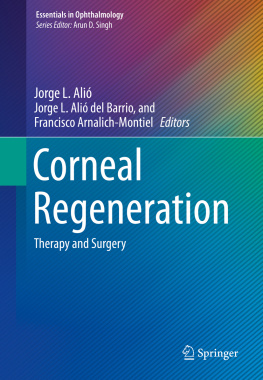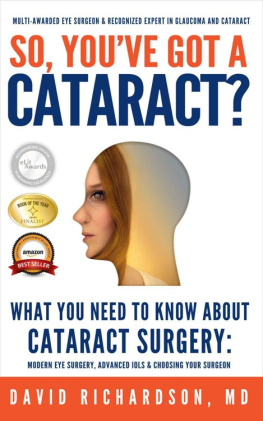Literature Review
There is a growing body of investigation focused on minimally invasive bimanual microincision cataract surgery (MICS). The first reports of this technique published in peer-reviewed journals appeared in the mid-1970s and 1980s [].
A series of cases of bimanual MICS was published in January 2002 which consisted of a noncomparative study of this procedure in 637 eyes []. The volume of publications on this subject has seen a considerable increase in the last 18 months. From 1995 through 2006, over 50 papers have featured bimanual, or biaxial, MICS. In 2007 and the first half of 2008, an additional 30 peer-reviewed papers have been published, addressing various topics.
Major Issues
The issues surrounding the debate between traditional, or microcoaxial, phacoemulsification and bimanual, or biaxial, microincision phacoemulsification are many. Within the published literature, these issues can be broken down into the following major groups:
Visual outcome: postsurgical best corrected visual acuity (BCVA), and change in astigmatism
Corneal/anterior chamber factors: corneal endothe-lial cell loss, postsurgical corneal swelling, and anterior chamber cell and flare
Incision-specific factors: thermal burn and incision leakage
Technical factors: effective phacoemulsification time (EPT) and total surgical time
Nearly all of the published studies examine one or more of these factors, either in a directly comparative setting or simply to determine the rates of these factors in biaxial MICS for comparison with historical levels in coaxial phacoemulsification. Some studies do provide data on other metrics specific to the particular aspect being studied, but these are widely variable and difficult or impossible to compare between studies []. We will focus on the above major issues in this review.
Major Studies
Many of the published papers on this subject use animal or cadaver eyes, are noncomparative, have significant confounding variables, or are simply opinion pieces or case reports. This leaves only a handful of studies which are considered seminal, high-quality papers. These are randomized, prospective, comparative studies conducted on human subjects by surgeons competent in the techniques being compared. Most have large sample sizes and minimal confounding variables. All were published in highly respected peer-reviewed journals. These studies are discussed individually and only statistically significant results are analyzed.
In January 2002, Tsuneoka et al. [] published a paper evaluating thermal burn, astigmatism, and endothelial cell loss as a result of bimanual phacoemul-sification using a 1.4 mm incision and a sleeveless phaco tip. This was the first large series studying bimanual phacoemulsification; 637 eyes were included. Although noncomparative, it remains an important study. Approximately 5% of the cataracts had grade 4 or 5 nuclear density. The results showed a mean operating time of 8 min and 42 s. Not one case of thermal burn was reported. Three-month postsurgical follow-up was done in 312 eyes. Measured corneal endothelial cell density had decreased by 4.6% in eyes with a nuclear hardness of grade 1, 6.9% in eyes with grade 2, 10.8% in eyes with grade 3, and 15.6% in eyes with grade 4 and above. The authors considered these levels to be similar to cell loss with traditional, coaxial, phacoemul-sification methods. Corneal astigmatism was 0.35D at postoperative week 1 and 0.18D at postoperative month 3, which was deemed to be far lower than postoperative astigmatism induced by standard phacoemulsification, despite enlargement of an incision up to 4 mm for IOL insertion. The authors concluded bimanual MICS to be at least as safe and effective as traditional methods, especially considering superior astigmatic results.
Jorge Ali, a pioneering surgeon with biaxial pha-coemulsification, published the first large prospective randomized landmark study in November 2005, comparing bimanual MICS with regular coaxial pha-coemulsification []. A total of 100 eyes with cataracts graded 24 were randomized to two groups, one receiving biaxial phaco from 1.5 mm incisions, and the other receiving coaxial phaco via a 2.8 mm incision. All other aspects of the surgeries were designed to be identical, including equipment settings, minimizing confounding variables. Key statistically significant results showed dramatic differences in estimated phaco time (EPT = total phacoemulsification time in seconds average power percent used): 2.19 for biaxial and 9.3 for coaxial. Postsurgical astigmatic changes were sig-nificantly lower in bimanual MICS (0.433 vs. 1.20D in the coaxial group). Postoperative corneal endothelial cell loss, anterior chamber cell/flare, and visual acuity were statistically equal in both groups. As in the Tsuneoka et al. study, no signs of thermal burns were seen with either technique. The authors understandably concluded bimanual MICS to be safe, effective, and in many ways superior to coaxial techniques.
In 2006, Kurz et al. compared biaxial microincision (1.5 mm) and coaxial small-incision (2.75 mm) cataract surgery in a well-designed study of 70 randomized eyes []. A multitude of outcomes were measured. BCVA on postoperative day 1 showed a mean of 20/25 in the biaxial group and 20/33 in the coaxial group. Eight weeks after surgery, BCVA in the biaxial group was 20/20 versus 20/25 in the coaxial group, showing notably better visual acuity outcomes in bimanual MICS. EPT times were measured to be greater than 3 s in 34% of bimanual patients and 68% of coaxial patients. Astigmatic changes were statistically similar (0.15 vs. 0.31D). Corneal endothelial cell losses were statistically equivalent in both groups (1415%). Overall, using these and other metrics, the authors concluded bimanual phacoemulsification to be as effica-cious as coaxial, and, in fact, superior in two aspects.
Cavallini et al. prospectively randomized 100 eyes in 50 patients to compare bimanual and coaxial pha-coemulsification in a paper published in 2007 []. All cataracts were graded 24. Particularly interesting was that all 100 procedures were done using the same machine and by the same surgeon, who was quite capable at both methods. Multiple key metrics were recorded. The authors reported all metrics to be statistically equal, including EPT (35 s), corneal endothe-lial cell loss (1012 cells/mm), and postsurgical astigmatism (<1D). Shorter surgical time was reported in the biaxial group (637 vs. 736 s). Less BSS was used in the biaxial technique. The authors concluded both methods to be safe and effective.

